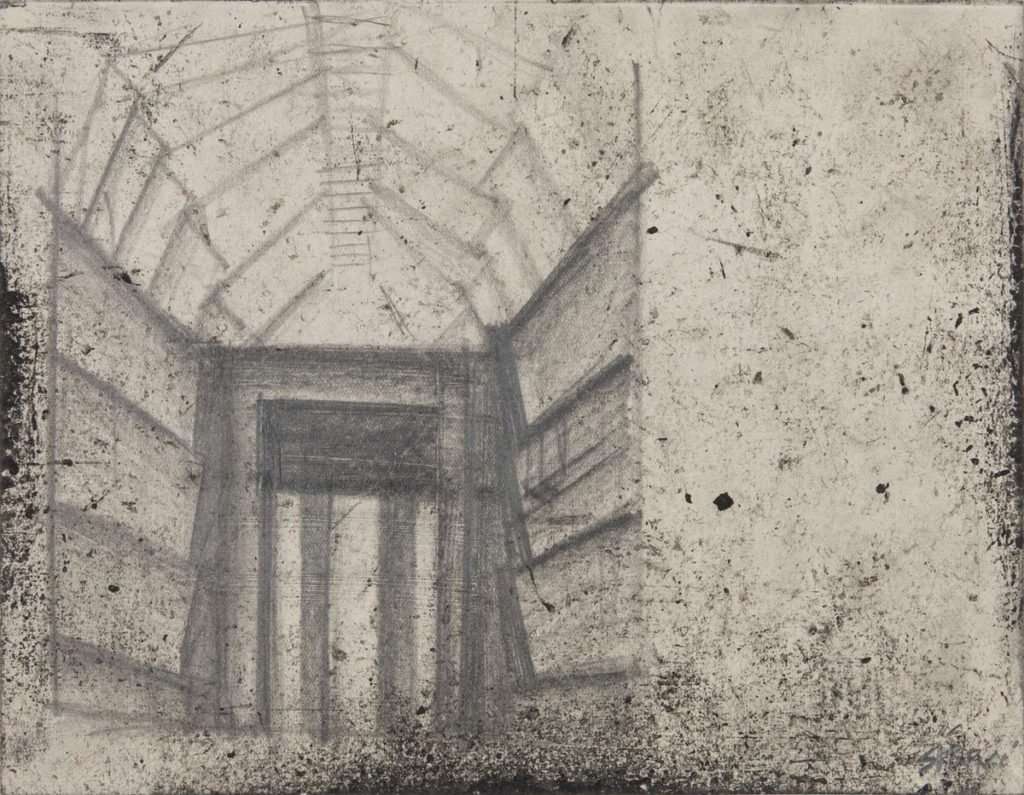Mario Sironi

Politics as a Pretext for Making
Mario Sironi compromised and traumatised in equal parts by his association with Italian Fascism, was known primarily as a painter and propagandist. He worked with and can be compared to Giuseppe Terragni, Mussolini’s most faithful architect, in his devotion to art as an ideological cause. He promoted ‘muralism’ as a step toward architecture as a gesamtkunstwerk, and worked with Terragni on a competition for a fascist monument, the Palazzo del Littorio (1934) as well as on Terragni’s famous Danteum (c. 1938).
Two of his architectural studies, shown here, nevertheless evince a more abstract desire to make space through geometry, whether via perspective or orthographic projection.
What is the representational ‘work’ performed by these drawings? They remain enigmatic for the most part, as we don’t (yet) know whether they were linked to any concrete projects. But if we read them as drawings/artefacts, there are some things we can feel and deduce.
In the first drawing, there is an intriguing contrast between precision and messiness. Depicted is an interior perspective of a glass-roofed Art Déco forum, cleanly delineated, reptilian and monumental. A sort of triumphal arch closes the perspective as if to put an end to the questions left open by the somewhat tentative lines of the lateral walls and the roof. The whole drawing is smaller than a sheet of typing paper, and it is not immediately clear whether and at what moment standard drawing tools have been used. Yet the proposed vision is precise, in contrast to the cloud of residue (ink?) around it, which contributes an atmosphere of work and craft to the document.

The second sheet is equally intriguing. At left, a freehand geometrical study, composed of line segments and curves, may or may not relate to the graphically heavier elevation study at right, which also plays on a dialectic between the curved and the rectilinear, between his known flirtation with Futurism and a certain affection for Neoclassicism. We can’t identify the object(s) of study, but we cannot help intuiting a preoccupation with the two founding elements of geometry and therefore of architecture. In retrospect, might we see politics as a mere pretext for making?

– Caitlin Murray